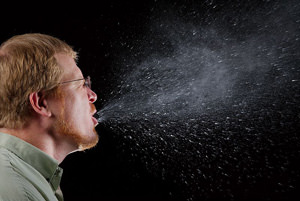Can Seeing an Illness Protect You From It?
Researchers in Canada showed young adults photos of obviously diseased people and found that the subjects’ immune systems were significantly more aggressive when later exposed to a glop of bacteria. Test subjects got a negligible boost from similarly upsetting, but not disease-y, images.
Researchers in Canada showed young adults photos of obviously diseased people and found that the subjects’ immune systems were significantly more aggressive when later exposed to a glop of bacteria. Test subjects got a negligible boost from similarly upsetting, but not disease-y, images.
Your support matters…Psychology Today via Lifehacker:
The researchers asked young adults to watch a 10-minute slide show containing a series of unpleasant photographs. Some of these participants looked at pictures of people who looked obviously sick in some way (people with pox and rashes, people coughing and sneezing and blowing mucus out of their noses).
The participants gave blood samples both before and after each slideshow. Next the researchers exposed these blood samples to a bacterial infection, and measured the extent to which white blood cells produced interleukin-6 (IL-6). IL-6 is a proinflammatory cytokine that white blood cells make when they detect microbial intruders. More IL-6 indicates a more aggressive immune response to infection. So, by measuring IL-6 before and after the slide show, the researchers were able to determine whether seeing pictures of disease-y people actually stimulated the immune system to fight infection more aggressively. And it did.
Independent journalism is under threat and overshadowed by heavily funded mainstream media.
You can help level the playing field. Become a member.
Your tax-deductible contribution keeps us digging beneath the headlines to give you thought-provoking, investigative reporting and analysis that unearths what's really happening- without compromise.
Give today to support our courageous, independent journalists.





You need to be a supporter to comment.
There are currently no responses to this article.
Be the first to respond.